Disappearing Sebadal
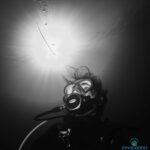
The sebadales are seagrass meadows that make up a unique ecosystem. They are a productive nursery for many species of fish and marine invertebrates. They have a high environmental and economic value, so their conservation is essential. The diver observes a seba leaf in the water column. It is the only seba leaf found east…
Forgotten Fishing Gear
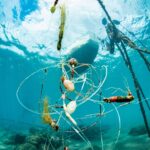
It is estimated that only 20% of plastic marine litter comes from the sea, from activities such as maritime traffic and fishing. However, garbage such as ghost nets or fishing gear, which can cause entanglement, can be very harmful to biota. Marine turtles and mammals suffer the most from this inadequate waste management. Photo by…
Marine Volunteering
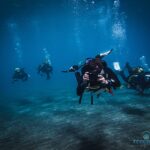
A group of volunteers set out on an expedition to clean the bottom of the sea. The seabed has been a forgotten waste dump for many years, as it does not generate bad odors or landscape impact before our eyes. The cleaning work carried out by the non-profit volunteer is to be greatly appreciated. Perhaps…
The Cemetery
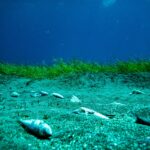
A group of fish from the engode (anthropic feeding) of sea turtles in the sebadal lie dead without being eaten. It is a very common practice that has made the authorities have to take measures on different occasions in our archipelago. Feeding wild animals is a bad habit that causes problems in the behavior of…
Other effects of the pandemic
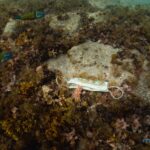
In the last year, garbage collection at sea has revealed the existence of a new object to be collected: masks. Either by carelessness or intentionally, in an island system like the Canary Islands, it is very easy for masks to end up in our sea. The effects on the biota of this new residue that…
Glass: The Perpetual Residue
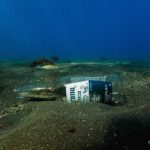
The glass remains indefinitely in the sea, like this beer bottle photographed off the coast of Tenerife. The continuous and uncontrolled pouring of glass into the sea has generated a great impact over time. How long can a bottle last on a sandy bed? How many generations will it see pass? Photo by Liam McGuire.
The Big Blue
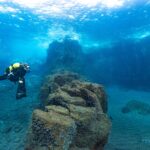
A cleaning carried out on the coast of Los Abrigos (Tenerife) shows the arduous and meticulous work of volunteering. The human being forgets waste when they do not see it, but that does not make it disappear. An extreme case of a marine landfill is found in the Strait of Messina, between Sicily and the…
Under the sea
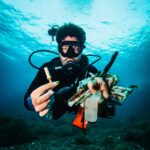
A volunteer shows part of the marine litter collected at the bottom of the coast of Los Abrigos (Tenerife). During a short dive you can fill your hands with various plastic waste such as wet wipes, many of them are made with synthetic materials such as polyester or polypropylene, which will end up as microplastics…
Cleaning in suspended sediment
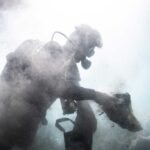
Volunteer in a marine cleanup collects semi-buried garbage; This generates a large amount of suspended particles in the surrounding environment, making it difficult to see during the cleanup. The continuous sedimentation that occurs in the marine environment causes the garbage to remain buried or semi-buried as time passes, but that does not mean that it…
Electrical waste at sea
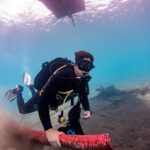
An INNOCEANA volunteer collects a pipe of electrical wiring found in an underwater cleanup on the beach of Las Teresitas. Some electrical and electronic materials used as insulating liquids contain toxic products called polychlorinated bisphenyls or PCBs. These are organochlorine chemical compounds used for their thermal stability and their resistance to flammability. They were banned…
Página anterior Página siguiente
Comentarios recientes